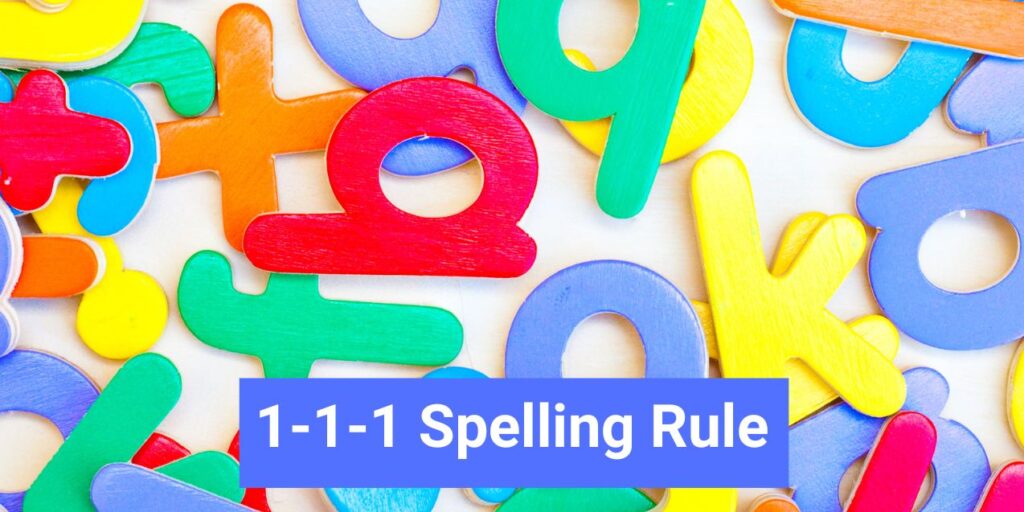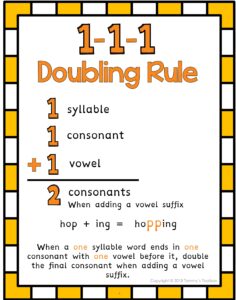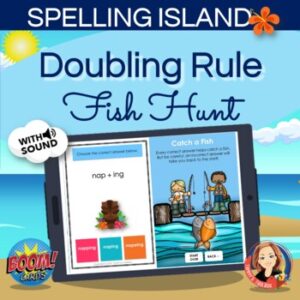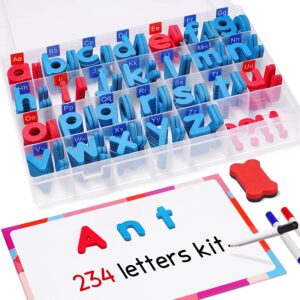The 1-1-1 Doubling Spelling Rule – Teach it Like a Pro!
If you’re a teacher, you know that getting your students to understand the 1-1-doubling spelling rule can be like trying to herd cats! But learning this essential rule helps young writers spell challenging words correctly, increasing both their accuracy and confidence. Luckily, there is an easy way for teachers to facilitate this process and help students build mastery of the 1-1-doubling spelling rule – teaching it “like a pro!”
In this blog post, we will discuss some creative tips and strategies for making teaching the doubling rule easier than ever before so your students can start spelling those tricky words without breaking a sweat. Keep reading to find out how!
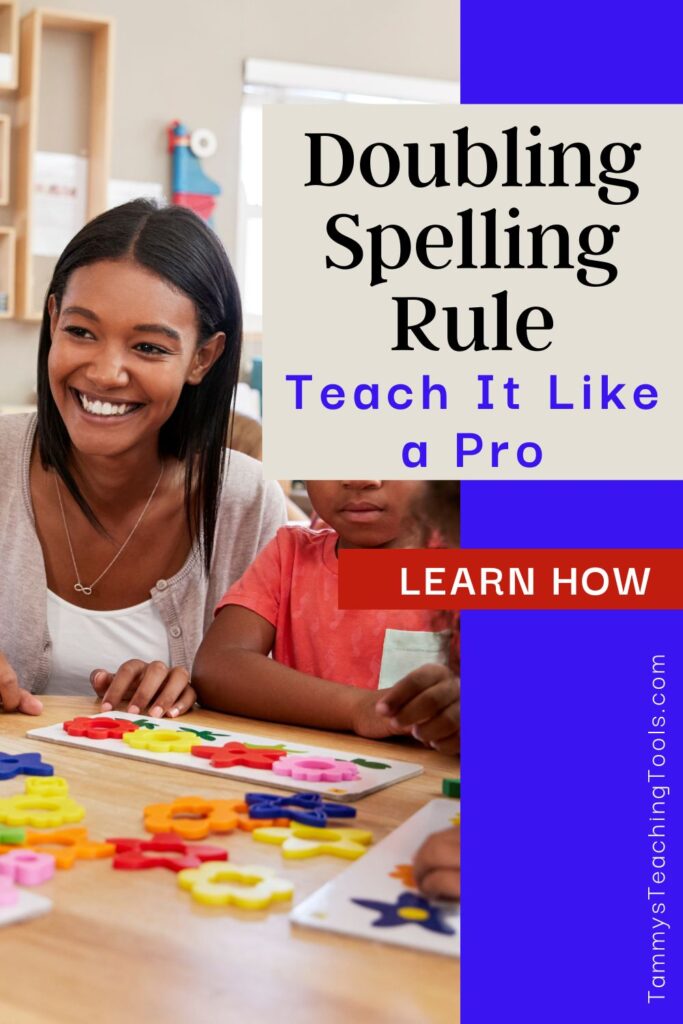
What is the doubling spelling rule?
When we write words in English, sometimes we double a letter to make the word sound right. The 1-1-1 doubling spelling rule is one of these rules that helps us know when to double a letter.
Here’s how the rule works:
- If a word has one syllable (that means it’s a short word like “hop” or “kit”),
- and it has one vowel (that’s the letter A, E, I, O, U),
- and it ends with one consonant (that’s any letter that’s not a vowel, like B, C, D, F, and so on),
then we double the last letter when adding a vowel suffix (like ing or er).
So, for example, if we want to write the word “hop” with the suffix “ing” and we follow the 1-1-1 doubling spelling rule, we know that we have one syllable, one vowel (O), and one consonant (P) at the end, so we need to double the P. That’s why we write “hopping” instead of hoping.
Start with Visuals
Display anchor charts to provide students with a visual reminder of the rule. You can also have word lists and examples for reference. It is easy to make your own anchor chart or grab this free chart.
Another visual that can help explain the 1-1-1 spelling rule is a simple chart with three columns labeled “Syllables,” “Vowels,” and “Consonants.”
In the “Syllables” column, you can write “1” to show that the word has one syllable. In the “Vowels” column, you can draw a picture of a single vowel, like an “O.” In the “Consonants” column, you can draw a picture of a single consonant, like a “P.”
Underneath the chart, you can write the rule: “If a word has one syllable, one vowel, and one consonant at the end, double the last letter when adding a vowel suffix.”
 Make sure students understand what a vowel suffix is and practice with both vowel and consonant suffixes.
Make sure students understand what a vowel suffix is and practice with both vowel and consonant suffixes.
You can use this chart to demonstrate the rule with simple words like “hop,” “kit,” and “jog,” For example, for the word “hop,” you would point to the “1” in the “Syllables” column, the “O” in the “Vowels” column, and the “P” in the “Consonants” column. Then, you would show that because the word has one syllable, one vowel, and one consonant at the end, we need to double the last letter, which is “P.”
Using a visual aid like this can help children understand and remember the 1-1-1 spelling rule more easily.
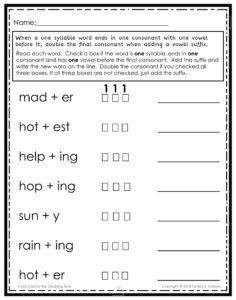
Get charts, worksheets, games, word lists, interactive notebook activities and more in this comprehensive spelling rules resource.
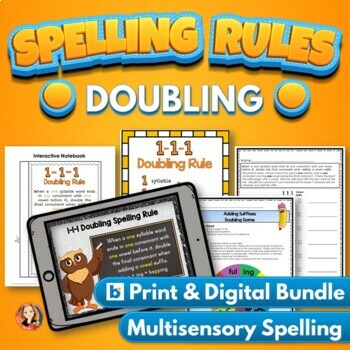
Make it Fun
Another great tip for teaching the 1-1-1 doubling rule is to make it fun! You can do things like create memory games or worksheets that involve matching pictures with words that follow (or don’t follow) the 1-1-1 doubling rule. This can not only help your students learn the rules, but also make learning more enjoyable.
Here is a fun digital game sure to keep your students engaged and learning.
It is also important to keep your instruction multi-sensory. Use letter tiles, whiteboards, colors, and tactile materials, and songs to use all the senses.
Here is a great set of letters for spelling and learning.
Practice Makes Perfect
As with any skill, practice makes perfect when it comes to teaching the 1-1-1 doubling rule. Encourage your students to practice writing out sentences where they have to apply this spelling rule correctly. This will not only help them become better spellers but also give them confidence in their abilities as they see themselves improving over time.
Teaching the 1–doubling spelling rule doesn’t have to be a chore – with these tips you can make sure your students will love learning this valuable skill! By using visuals, making it fun, and encouraging practice you’ll be able to ensure that your students will master this important spelling technique before you know it! With these tips in hand, you’ll be able to teach this useful skill like a pro in no time at all!
Happy Spelling,

For more teaching tips check out these posts
Making the Y to I Spelling Rule Fun with 3 Easy Activities
Don’t Drop the E Just Yet. 7 Essential Teaching Tips


